Choosing a breast pump
Why do you need to express?
In the early days after birth you may find you need to pump frequently to provide milk for your baby who, for whatever reason, is not able to latch and feed directly at the breast. Or your baby may be struggling to drain the breast effectively. Frequent expressing will be needed to stimulate milk production and manage engorgement as the milk starts to come in. Later, you may need to express because of inefficient feeding and/or slow weight gain to provide top ups and/or boost a low supply. As baby gets older you may want the flexibility of being able to leave her baby in the care of someone else so you can have a break, go to bed early or attend appointments. You may be returning to work and need to leave milk for your baby.
There may also be situations where a mother wishes to re-establish a milk supply after a break from breastfeeding (relactation). More parents are now inducing lactation in situations where they are adopting a baby, or in same sex couples where the non-birthing parent wishes to share in the breastfeeding, or where a parent is transgender. Both these situations usually necessitate frequent expressing.
Not all breast pumps are the same
When a baby cannot latch and suckle effectively at the breast immediately after birth due, for example to prematurity, illness in the baby or mother, other additional needs, an oral abnormality such as a cleft palate or tongue-tie or simply because of a difficult birth then it is vital that expressing starts early. This will ensure a good milk supply is established and provide colostrum for the baby. Early stimulation and drainage of the breast helps to further develop the glandular tissue (the milk factory) within the breast.
Furthermore, once the milk comes in at day 3-6 milk production begins to switch from endocrine control (driven by hormones) to autocrine control (driven by the frequent and effective removal of milk from the breast).
Hospital grade/multi user pumps
These multi user pumps were traditionally called ‘hospital grade’. Unfortunately the term ‘hospital grade’ is no applied to virtually every pump on the market as a marketing ploy. There are only two pumps available in the UK that were designed to be used by multiple mothers in hospital settings and these cost around £1000 to purchase so are usually hired. Double pumping not only reduces the time required to express, as both breasts can be expressed simultaneously, it also tends to stimulate more milk production (Jones et al, 2001) .
As an IBCLC who provides CERPs accredited training IBLCE have decided that I am not allowed to share information on my website about pump hire. But if you email me here sarah@nursingnurture.co.uk you will receive an autoresponder with pump hire information.
Some Children’s Centres loan out breast pumps for free. This happens in my local area. However, the pumps which are loaned out in my area are ‘personal use’ double pumps, not multi user grade. They are also often loaned out with just one collection set meaning they can only be used to pump one breast at a time. Parents are sometimes placed on a waiting list. So, they are not suitable in the situations previously described. It is important to check that what you are being offered is right for the purpose you intend to use it.
Personal use double electric pumps
Personal use electric pumps come in double and single options. All double personal use pumps can be used as a single pump. However, most single electric pumps cannot be converted to double. Double personal use pumps are good for maintaining supply, returning to work or for boosting supply if for any reason it has dipped. Many mums will switch to a personal use pump, after the first month or so, when they have established a good supply with a multi user pump, if they are in a situation where ongoing frequent expressing is needed.
Sometimes, mothers experience a drop in supply after the early weeks due to illness, the use of formula, certain medications, an undiagnosed latching or sucking issue (commonly a tongue-tie), or because they have implemented scheduled feeding to get baby into a routine. Double personal use pumps can be extremely helpful in boosting supply in these situations. Generally supply recovers more quickly and efficiently than with a single electric pump. Double personal use pumps are also helpful when returning to work as pumping sessions at work will take less time.
Single electric pumps
Single electric pumps can be used for the same purposes as the double personal use pumps, but pumping will be less effective and more time consuming. They are more suited to mothers who only need to pump once or twice a day to stock the freezer or provide milk so someone else can feed the baby. Some single electric pumps retail for the same price as personal use double pumps, so this is something to be aware of.
Electric pumps, whether single or double, can be helpful in effectively draining breasts affected by engorgement, blocked ducts, or mastitis when a baby is struggling to do this, or the nipples are too sore for breastfeeding.
Hands free wearable pumping
What about hands free wearable pumps? There are two types available. Some that fit completely inside a bra and have an integrated/internal motor. Others have a collection cup which sits inside a bra and is connected to an external motor which you can attach to your belt or waist band. They can be useful for mothers who need to pump on the go or discreetly and my feeling is that working mothers with established milk supplies are the ones who may benefit most from this type of pump. I have had a few mothers use a wearable pump in the early days of their breastfeeding journey, but supply has been slow to pick up, particularly with the ones with the integrated motor. This is probably because the design of hands-free pumps necessitates the use of a small motors which is not likely to be as powerful as the much larger motors found in the multi user pumps. The size, shape, texture and contour of the breast will influence how well a wearable pump fits and works for individual users.
Some mums find the hands free wearable pumps don’t fit particularly well to their breasts. There are also limited options for achieving a good flange fit (essential for comfortable, effective pumping), as inserts have to be used to adjust flange size.
There are other ways to achieve hands free pumping. The simplest way is to use a ‘pumping bra’ or, if you have basic sewing skills, convert a standard nursing bra or close-fitting crop top for the purpose.
Manual and silicone pumps
Flange fit
The standard size flange supplied with many pumps is a 24mm but most women will need a flange that is between 13-19mm.
Some pump flanges have soft silicone inserts which can be removed to create a larger flange and some pumps are supplied with more than one flange size. But in most cases if the flange/s supplied with your pump do not fit then you will need to buy a different sized flange or a flange insert.
Manufacturers have fitting guides on their websites and they usually suggest a flange that is about 4mm larger than the diameter of your nipple. But recent research on this suggests a snugger fit, with a flange that is a similar size as the nipple tip is likely to be most comfortable and yield the most milk.
Most manufacturers of pumps do not make flanges in the smaller 13mm-19mm size range. But there are companies who specialise in making a range of smaller flanges and flange inserts compatible with most of the pumps on the market. One nipple may be larger than the other, so some mums find they need a different size flange on each breast. Furthermore, flanges in different shapes and materials are available to provide better fit depending on breast texture, contour and nipple elasticity.
I strongly recommend seeking out an IBCLC who offers a flange fitting service to avoid using the wrong size flange and spending money on flanges and inserts that may not fit. I offer this service.
Spare parts
Portability
Quality
Second hand pumps
Parts, particularly the crucial but delicate valves, can easily get damaged during use and plastic can deteriorate with repeated cleaning and sterilising, and storage meaning that seal and therefore suction is compromised. For these reasons and for reasons of hygiene it is recommended that collection sets are replaced and not handed on. Furthermore, not all pumps are ‘closed systems’, notably personal use pumps in the Medela range. This means that it is possible for milk to be drawn up the tubing and into the motor housing and this poses a theoretical risk of cross infection. So, if you do opt for a second-hand pump ensure that it has not been overused, replace the collection sets and check that it is a ‘closed system’ pump.






